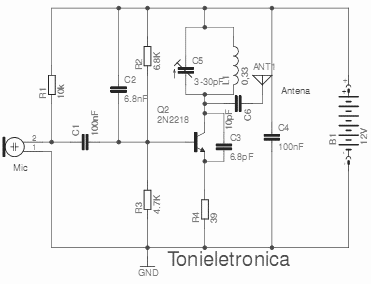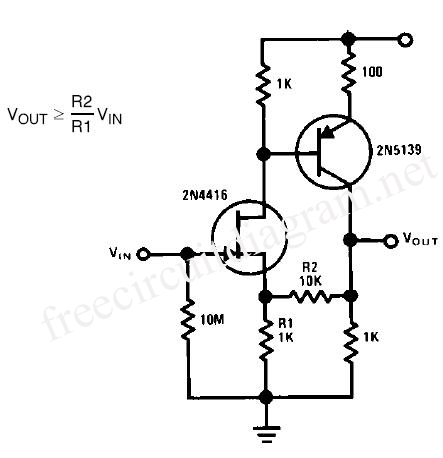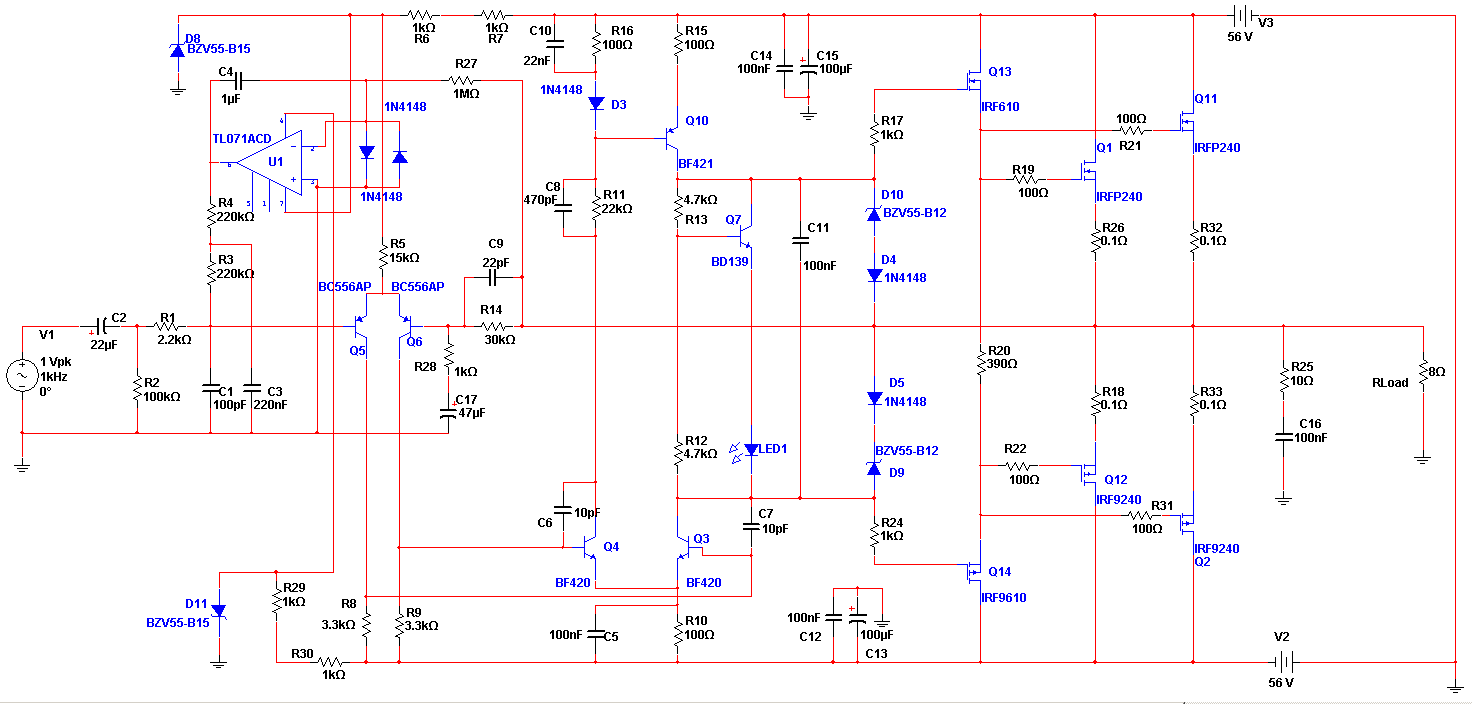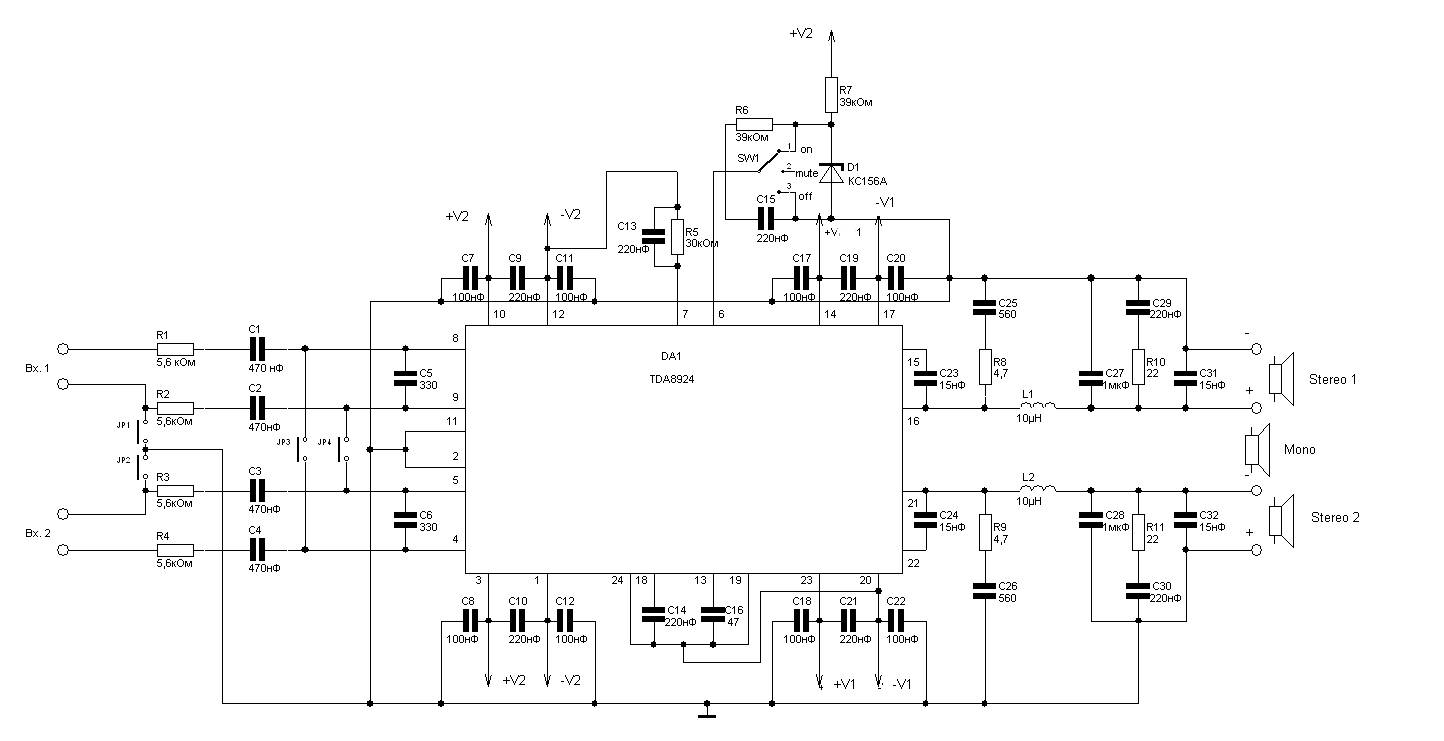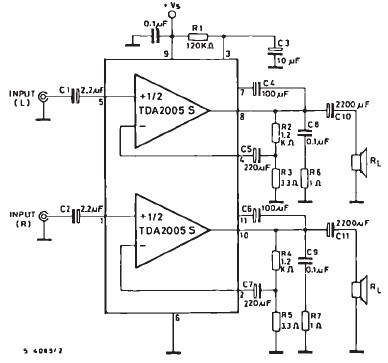
2 Watt Mini Audio Amplifier
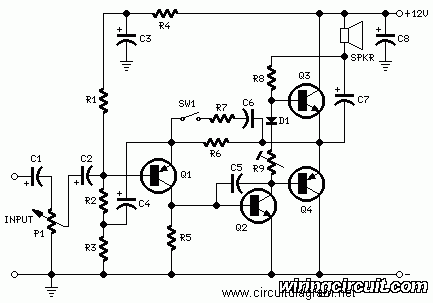
This circuit is inexpensive, easy to assemble, and quite straightforward. It is a general audio amplifier that can be used with computers, CD players, or other devices that have a headphone output. The circuit was intentionally designed without the use of integrated circuits (ICs) and in a rather open manner.
The audio amplifier circuit described operates on a simple transistor-based design, providing an effective means to amplify audio signals from various sources. The circuit typically includes a few essential components: transistors, resistors, capacitors, and a power supply.
The input signal from the audio source, such as a computer or CD player, is fed into the base of the first transistor through a coupling capacitor, which blocks any DC component and allows only the AC audio signal to pass. This transistor acts as the initial amplifier stage, boosting the weak audio signal.
The output of the first transistor is then connected to the base of a second transistor, which serves as the final amplification stage. Additional resistors are used to set the biasing conditions for the transistors, ensuring they operate in the active region for optimal amplification. Capacitors are included in the circuit to filter out unwanted noise and stabilize the power supply.
The output of the second transistor can be connected to a speaker or headphones, allowing for the amplified audio signal to be heard. The circuit can be powered by a low-voltage power supply, making it suitable for portable applications.
Overall, this audio amplifier circuit is a cost-effective solution for enhancing audio output from various devices, making it an excellent choice for hobbyists and DIY enthusiasts looking to build their own audio amplification system.This circuit is inexpensive, easy and quite simple. This is general audio amplifier which can be used for computer, CD player or other devices which have headphone output. The circuit was deliberately designed using no ICs and in a rather o.. 🔗 External reference
The audio amplifier circuit described operates on a simple transistor-based design, providing an effective means to amplify audio signals from various sources. The circuit typically includes a few essential components: transistors, resistors, capacitors, and a power supply.
The input signal from the audio source, such as a computer or CD player, is fed into the base of the first transistor through a coupling capacitor, which blocks any DC component and allows only the AC audio signal to pass. This transistor acts as the initial amplifier stage, boosting the weak audio signal.
The output of the first transistor is then connected to the base of a second transistor, which serves as the final amplification stage. Additional resistors are used to set the biasing conditions for the transistors, ensuring they operate in the active region for optimal amplification. Capacitors are included in the circuit to filter out unwanted noise and stabilize the power supply.
The output of the second transistor can be connected to a speaker or headphones, allowing for the amplified audio signal to be heard. The circuit can be powered by a low-voltage power supply, making it suitable for portable applications.
Overall, this audio amplifier circuit is a cost-effective solution for enhancing audio output from various devices, making it an excellent choice for hobbyists and DIY enthusiasts looking to build their own audio amplification system.This circuit is inexpensive, easy and quite simple. This is general audio amplifier which can be used for computer, CD player or other devices which have headphone output. The circuit was deliberately designed using no ICs and in a rather o.. 🔗 External reference

